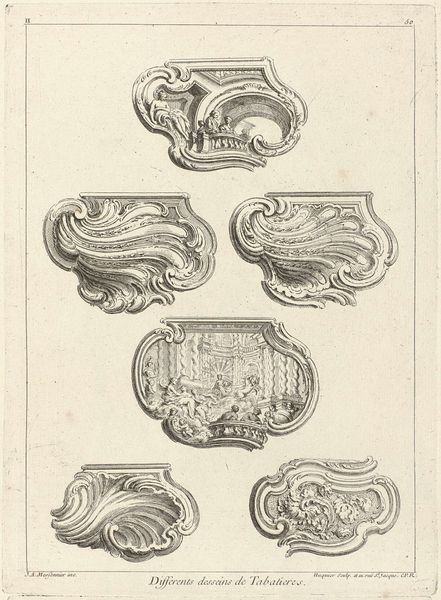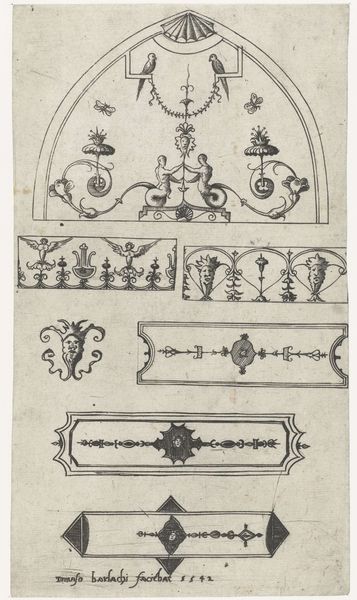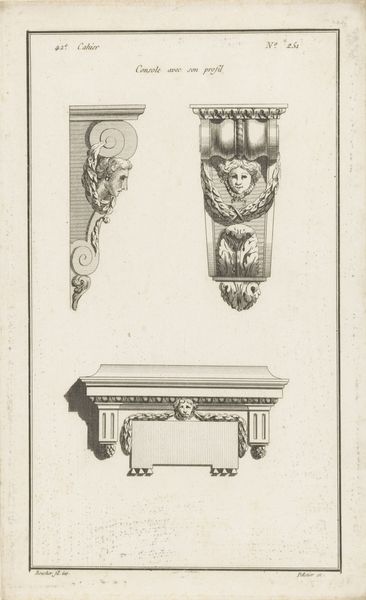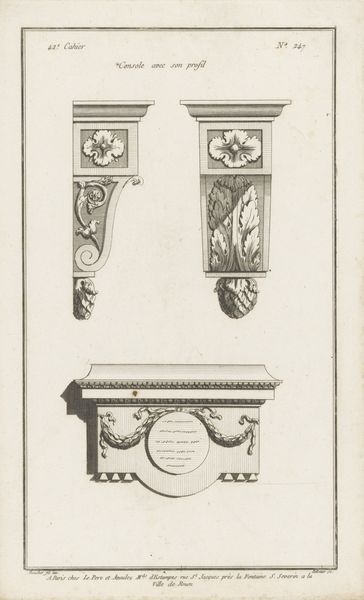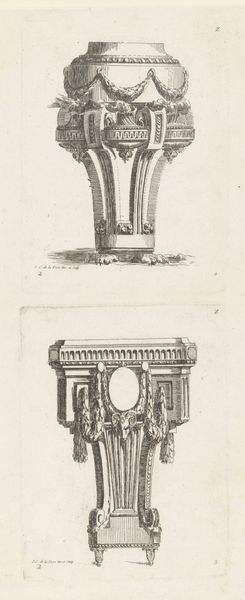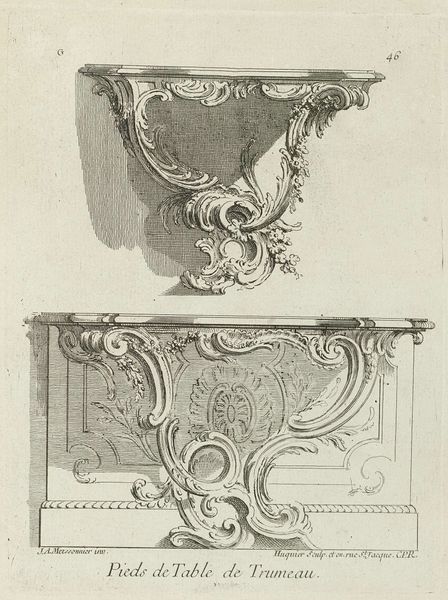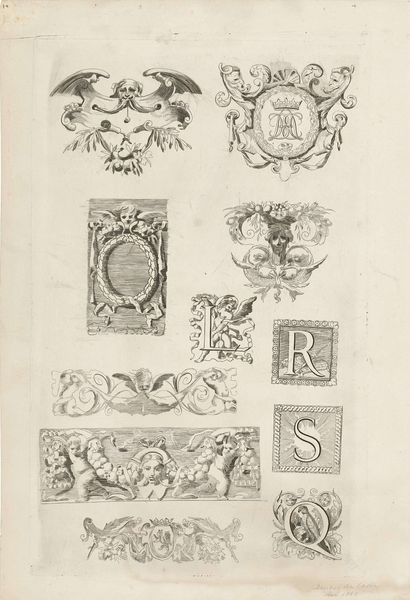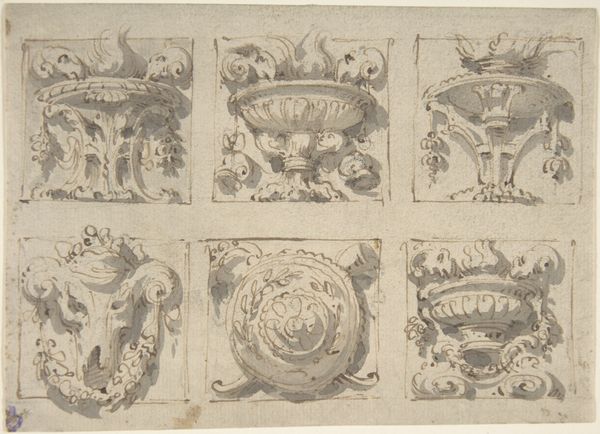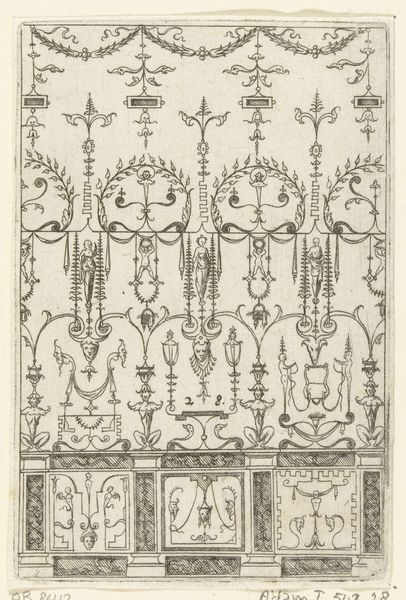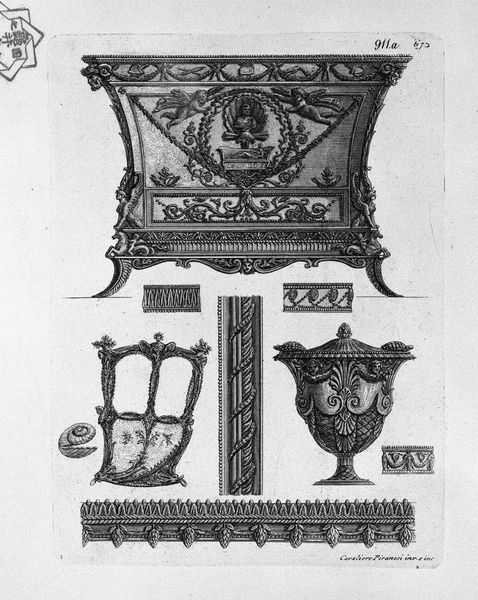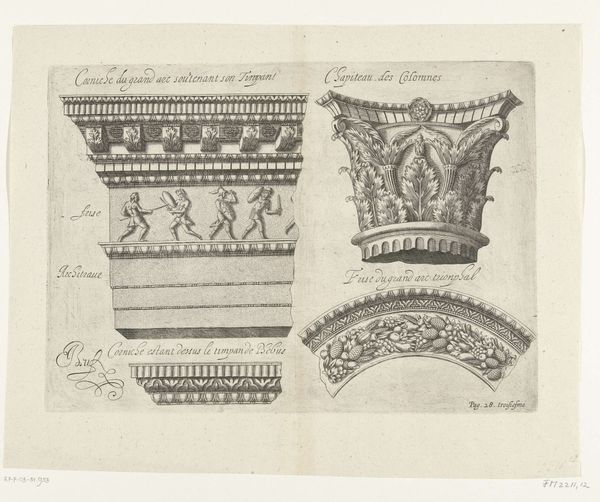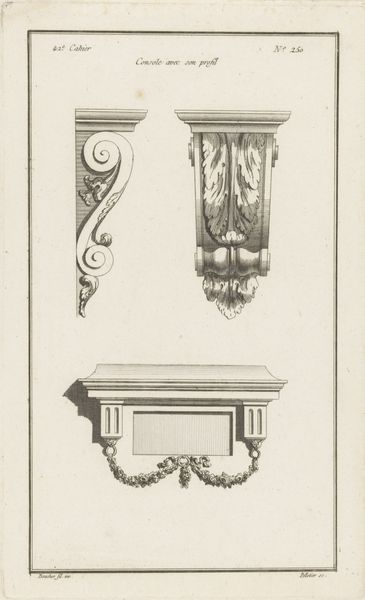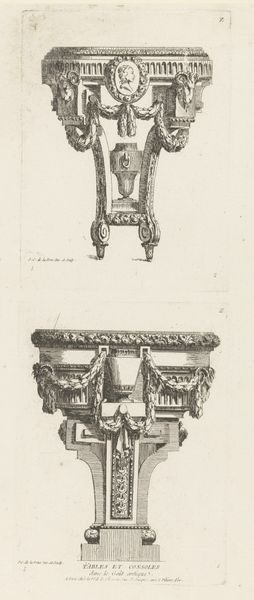
drawing, print, paper, ink, engraving, architecture
#
drawing
#
baroque
# print
#
paper
#
form
#
ink
#
geometric
#
line
#
engraving
#
architecture
Dimensions: height 277 mm, width 180 mm
Copyright: Rijks Museum: Open Domain
Editor: This is an engraving from 1636 called "Five Ionic Capitals, Three with a Side Elevation." It's fascinating seeing these architectural forms laid out so precisely. It almost feels like looking at a blueprint, but one made with incredible artistry. What strikes you when you look at it? Curator: I'm drawn to how this print embodies the cultural obsession with classical antiquity during the Baroque period. Consider the socio-political implications: rulers and the wealthy elite sought to legitimize their power by associating themselves with the grandeur and perceived order of the Roman Empire. These meticulously rendered capitals served as models, disseminating classical architectural ideals across Europe. Editor: So, this wasn't just art for art's sake? It had a purpose beyond being aesthetically pleasing? Curator: Absolutely. Engravings like this played a crucial role in shaping architectural styles and public spaces. Think about it: these images, mass-produced, influenced the design of buildings and monuments, reinforcing specific ideologies about power, order, and civilization. Do you notice how some capitals are more ornate than others? Editor: Yes, some have figures and elaborate carvings. Are those variations from different regions, perhaps? Curator: Possibly. Also, think about patronage. Patrons often dictated the level of ornamentation, reflecting their individual taste and social standing. The display of wealth and knowledge through architectural detail was a significant status symbol. Editor: It’s interesting how a simple drawing can reveal so much about the culture of the time. Curator: Precisely. This image becomes a window into the power structures and artistic values of the 17th century, reflecting how the past was used to shape the present and project a certain image of authority. The image reminds us that art always has a role to play within society, however overt or understated.
Comments
No comments
Be the first to comment and join the conversation on the ultimate creative platform.
